Fairy tales are tightly entwined with children’s media, so it’s to be expected that the most famous child star of all time, Shirley Temple, would have connections to them. In 1939, Temple was chosen to present Walt Disney with an Oscar for Snow White and the Seven Dwarfs (feat. seven mini Oscars alongside the big one). Her presentation speech is notable for birthing the misconception that Snow White’s prince is named Ferdinand when she mentions Ferdinand the Bull alongside Snow White. The success of Snow White opened up the market for fantasy films that would appeal to children, Temple’s own audience base. And yet none of her fantasy works achieved critical success.
Temple’s career was largely built on adaptations. Her earliest films were parodies called Baby Burlesks, spoofs of then-popular films that put children in cringely adult roles. As a toddler, she played a “dancer” who trades kisses for lollipops in one of these short films. She achieved great acclaim in literary adaptations like Heidi, A Little Princess, and Rebecca of Sunnybrooke Farm. Only one of her movies, The Blue Bird, was a fantasy, and it kickstarted the end of her career.
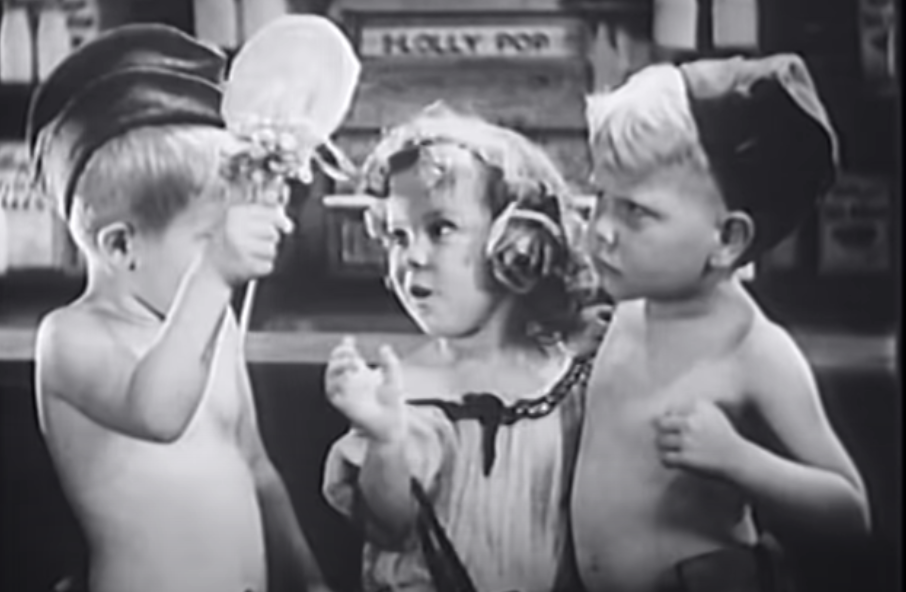
Shirley Temple had been momentarily considered for the role of Dorothy in MGM Studios’ Wizard of Oz before Judy Garland was cast instead. After Garland and MGM achieved great success, Temple’s 20th Century Fox attempted to cash in with a knock-off. Like Wizard of Oz, The Blue Bird starts off in black-and-white, until Temple’s character, Mytyl, awakes into a realm of color. Mytyl and Dorothy both amble through episodic fantasy sequences accompanied by fantastical companions. Both return home for a bookend finish. Dorothy learns her shoes had the power to bring her home all along and Mytyl’s quest for the bluebird of happiness ends with a brown bird she found at home turning blue. Both express dissatisfaction with their pre-departure lives, but Mytyl is decidedly more bratty than Dorothy.
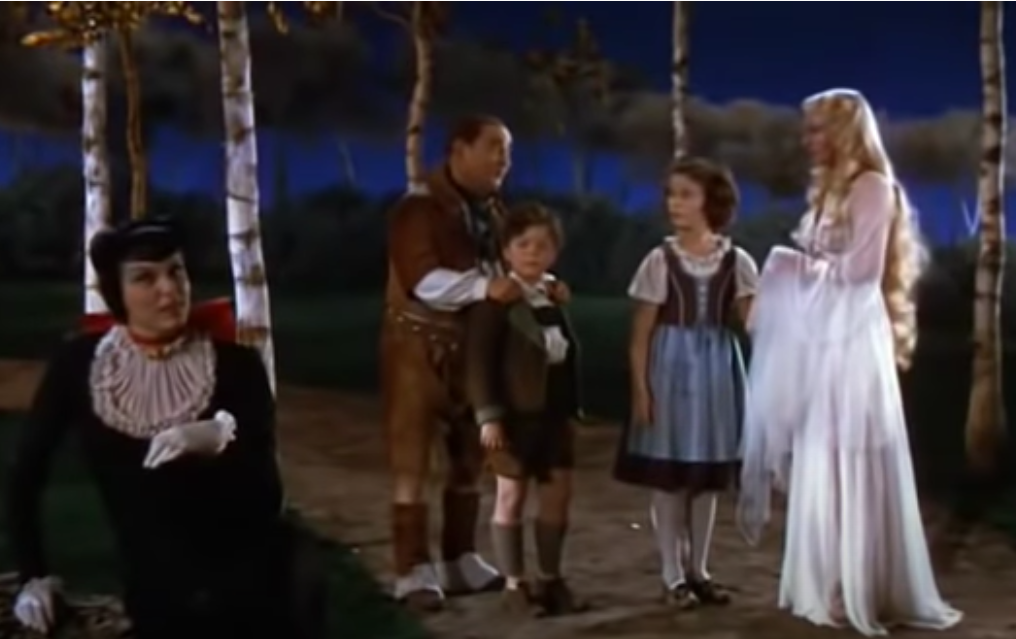
Shirley Temple rose to prominence in sugar-n-spice roles and her mother, Gertrude Temple, insisted Mytyl be made bratty to showcase her range as an actress. The film kicks off with Mytyl capturing a bird in the woods and running into a sick little girl named Angela on the way home. When Angela begs Mytyl to trade her the bird for a doll, she claims she can’t because it’s a Christmas present to another little girl. Later, Mytyl’s brother asks her who the girl in question is.
“Who do you suppose? Me.”
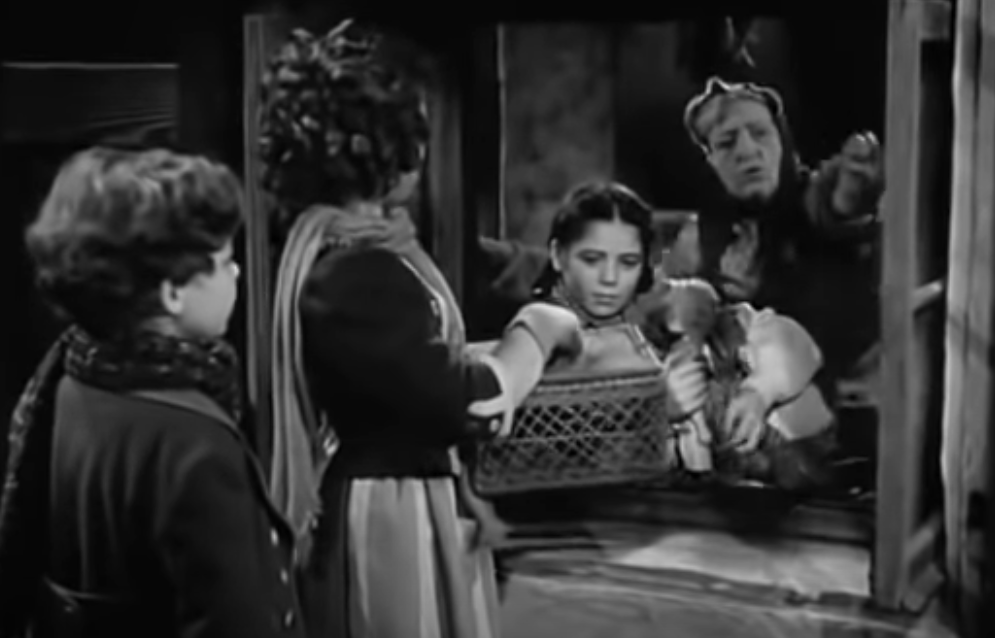
Rude characters can work in fairy tale parodies, but The Blue Bird is more sincere in tone. Something-either the notion of a mean Shirley Temple or the didactic moral at the end where she learns to be nice-turned audiences off. It was the first flop of her career, nicknamed “Dead Pigeon” by the press, and helped push the child star into a teenage retirement.
One problem as Shirley’s career progressed was age. If you star in your first feature film at age six, your image can’t grow up with you. She made movies sporadically in her teens but retired from film forever at age 21. Her finances were depleted by the time she reached adulthood and her second husband, a businessman named Charles Black, helped her brainstorm ways to profit off her childhood success. The Blacks were savvy enough to cash in on the nostalgia market. “Remember the Shirley Temple doll you had as a child? Wouldn’t you like one for your own daughter?”
In 1958, at age thirty, she decided to return to show business with a TV program called Shirley Temple’s Storybook. Television hadn’t been a viable option in her youth, but as the technology boomed, it became a lucrative market. The small screen and fantasy were both new avenues for her. Some of her films had featured fantasy scenes before. Magic wooden shoes helped her fly in Heidi and she portrayed a queen in a daydream sequence in A Little Princess, but aside from Dead Pigeon, audiences weren’t used to seeing her in fantastical plots. In many ways, she’d been set up to become a storybook heroine. Her characters usually lost at least one parent and many were orphans, a fairy tale staple. The bulk of her career took place during the Great Depression and lots of her films have a rags-to-riches vibe, which can tie in to fairy tales as social mobility fantasies. Shirley Temple’s Storybook sets classic fairy tales alongside other beloved children’s stories, like Madeline and Pippi Longstocking. She avoided juvenile roles like Red Riding Hood, Gretel, or Goldilocks in favor of stories like Rapunzel, Sleeping Beauty, and Little Mermaid, which could accommodate adult princesses. Personally, her fairy tale show might have represented a return to childhood as an adult after she’d worked like an adult as a child. She introduces her Little Mermaid episode by saying, “Ever since I was a child I wanted to play the role of the innocent little mermaid who loses her heart to a land prince and tonight my dream has finally come true.” While modern child stars usually take on an edgier, harder image in early adulthood, Shirley Temple seized an opportunity to pursue the childish, innocent stories that had appealed to her back at the age when she was forced to portray a lollipop prostitute.
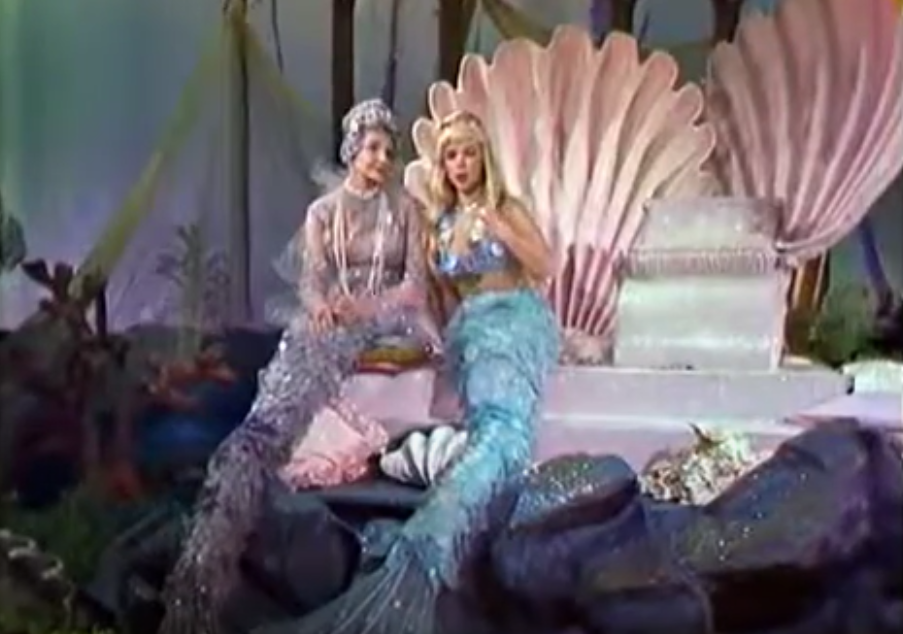
Her Little Mermaid episode is groundbreaking for being the first time that fairy tale was brought to the screen, though it had been produced on stage many times before and the 1952 Hans Christian Andersen movie included the ballet as a story-within-a-story. In some ways, Temple’s take is more loyal to the Andersen text than other adaptations. The threat of turning to sea foam is always there and her legs pain her when she walks. But she’s allowed to talk in this one. This simultaneously allows for greater character development and interaction while also raising the question of why she doesn’t just tell the prince she’s in love. Her voluntary lack of communication leaves the prince in a happily arranged marriage where he believes his bride-to-be, who he met on the seashore after his mermaid rescue, is the woman who saved his life.
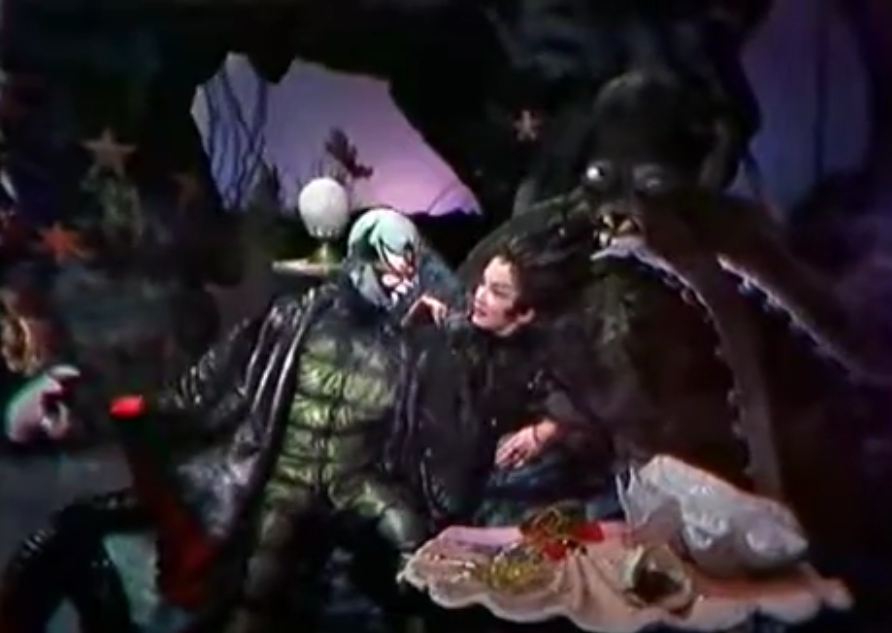
The sea witch of the Andersen text was a neutral donor character who equipped the mermaid with legs but otherwise took no interest. Shirley Temple’s sea witch is a villain who decides with her lawyer, a freaky-looking bug-man-fish thing, to transform her so she can suffer. Since this witch was the first on-screen sea witch, her portrayal might have helped inspire the villainous Ursula 28 years later.
The special effects are surprisingly decent for the early sixties. All the mermaids swim through the air on usually-invisible wires and the underwater scenes are shot through a gauzy, watery filter. The beautiful production values helped contribute to the financial ruin of the show. Color TV was still expensive in the early sixties.
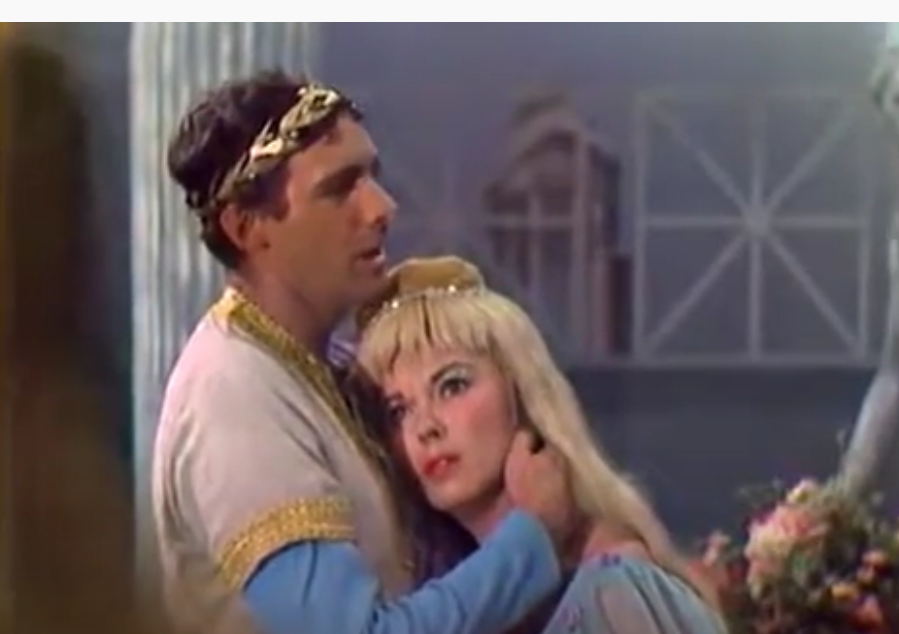
Some of the writing is clumsy. The show is set in Ancient Rome but characters refer occasionally to Greek gods. Mermaids are stated to live exactly 400 years, and yet 310-year-old grandma had a romance with the mortal prince’s grandfather. The chronology doesn’t match up too well. But perhaps this can be forgiven because it fleshes out the mermaid’s family life and provides a multifaceted look at interspecies romance, the topic of our last post. Grandma’s one-star review of her own granddaughter as land prince’s lover, based on her own experience, is “you can’t dance” and that she’d just “wriggle on the sand.” Grandma later becomes the rescuing force, selling off several years of her own lifespan to allow the mermaid to return to the sea.
The conclusion is a didactic one, with Shirley Temple moralizing about sacrificing for those you love. Children’s television is all too inclined to didacticism and Temple did enforce a high moral standard on her show. She once fired a stagehand for swearing on set and campaigned for moral decency in media. Though the show certainly has its artistic merits and this episode should be appreciated from a historical perspective today for breaking ground in televising Andersen’s The Little Mermaid, Shirley Temple’s Storybook did not rejuvenate her career. The pricey production values weren’t so sustainable and perhaps there was no audience sweet spot. Children of a new generation had no reason to fangirl over thirty-two-year-old woman. For adult viewers, she was no longer the child they had fallen in love with. There’s some scant grown-up humor, like when the sea witch attempts to take the Little Mermaid’s money without giving her legs in return and her lawyer says, “You can’t back out now. She can sue us for breach of contract.” But it’s not really funny enough to appeal to a mature audience.
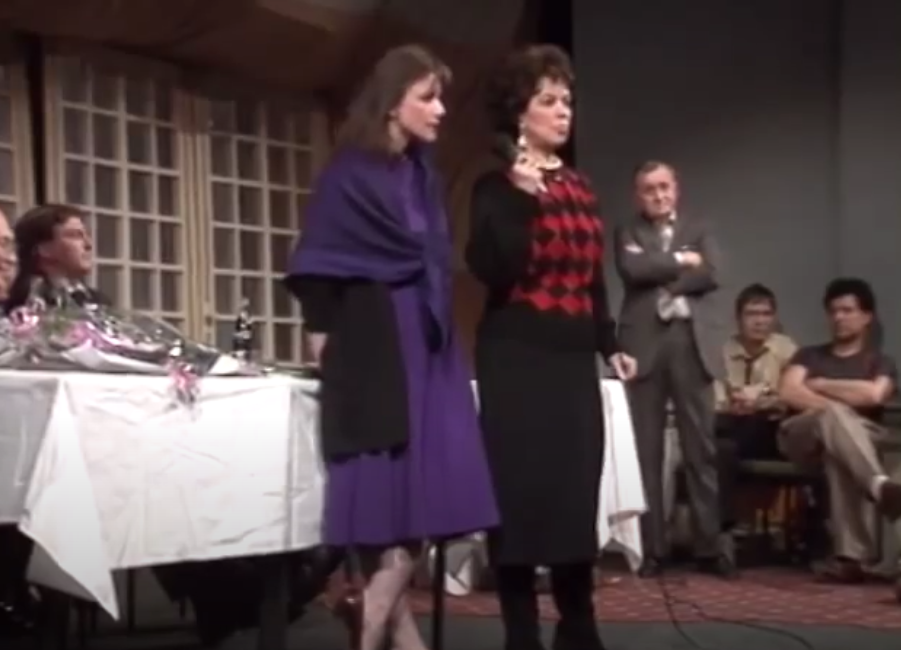
Though a blue bird fantasy killed her career and using fairy tales to remake herself for a new generation was a bust, she later achieved a Happily Ever After in politics. Shirley Temple Black went on to a career as a diplomat in the Republican party, serving as ambassador to Ghana from 1974 and 1976 and the only female ambassador to Czechoslovakia from 1989 to 1992. Her diplomatic career has the unintentional side effect of humorizing an exchange from this episode where the prince explains the necessity of his arranged marriage:
Prince: No, little one, you don’t understand. This is a matter of diplomacy.
Mermaid: What does diplomacy mean?
Quite frankly, the mermaid is a princess, too, and ought to have experience with diplomats. But isn’t there something awfully empowering about a little girl who was made to work from the time she was a toddler, sometimes sexualized for a laugh, vulnerable to the whims and reviews of adult audiences and industry professionals, finding fulfillment in crafting a fantasy world for herself, before moving on to an important role on the international stage? As Ambassador Black, she was able to win the happy ending she never could as Princess Shirley.